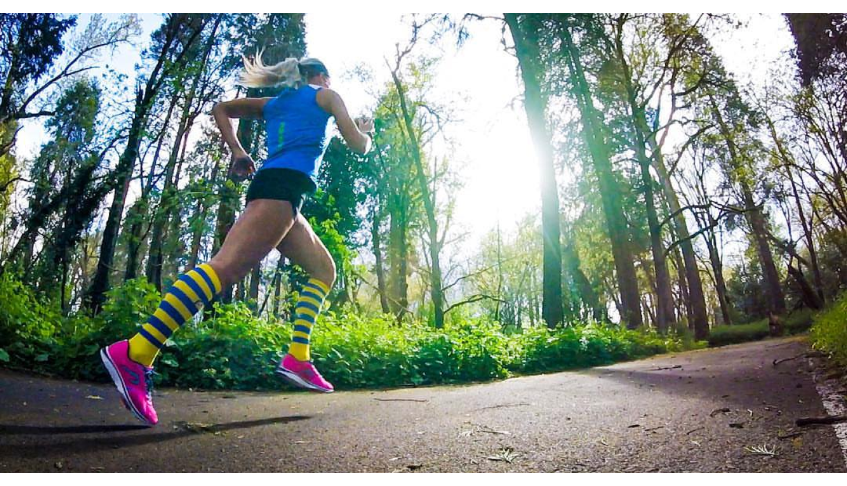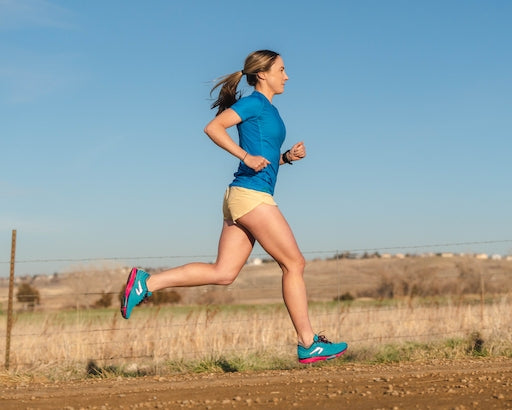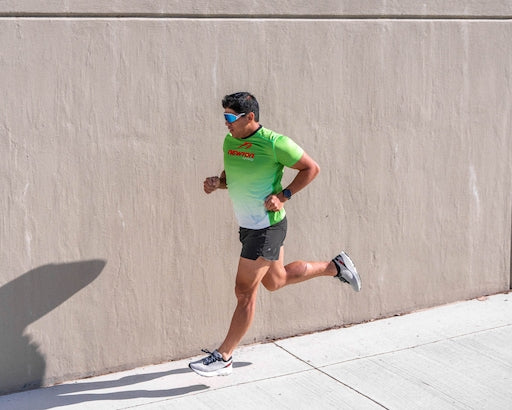
Creating Efficient Running Mechanics With Your Running Shoes
25 October 2019
By: Mackenzie Madison; Professional Triathlete, MS Exercise Physiology
Every endurance athlete has a goal of being as efficient, powerful and fast over long distances. There are so many tools that you can use to help you get to that point: your training, coaching, equipment — in addition to your normal training regimen.
The most important basic, core aspect of sport is your kinetic chain dynamic. It is how you propel any movement forward. In running, your overall response to the ground and how you gain that forward momentum is vital in propelling yourself forward. Specifically, your running shoe is your direct contact that helps manipulate that push-off, drive and efficiency, along with proper stride mechanics.

Obtaining the proper equipment, tools and gear can truly help you become the best athlete you can be not only in terms of speed but also in keeping you injury-free. Running shoes are more important than one would think, especially with modern developments that help promote proper foot biomechanics. Equally important is quality of running stride, which can make or break your speed and you likelihood for injury. Achieving the proper biomechanical chain is your key to success in any sport. Either you are working efficiently, or you’re working harder than you need to in triathlon.
The running stride creates an elastic “X sling” that starts in the center of your chest. When the opposite arm and leg stretch, it creates a forward pulling movement. In order to access this active/passive dynamic you have to make sure that every link from head to toe is in line for fluid movement during running. But this is just one part of the puzzle. When you are looking to purchase running shoes, a specialty shoe store, physical therapist, or even your strength trainer or coach can do a proper analysis of your foot landing and evaluate with general mechanics of the foot. Are you a pronator or supinator? Are you a forefoot, midfoot or heel striker?

Gravity is always pulling us down to the ground, therefore our point of landing and push-off for running is key. Where your foot lands, your body type and strength can affect your ability to overcome gravity and promote forward propulsion.
Triathlon differs from pure running since the athlete has been biking prior to the running. Triathletes have a tendency to have hip flexion tightness. That tightness actually creates a running form that’s not as efficient. If you look at professional
runners you’re going to see that their hip flexion is optimal. They may be midfoot or heel strikers, but the most important thing is they are able to get that flexion open and land directly below their feet for proper gait mechanics. The lack of open hip angle can create lower back pain, lack of glute activation, knee pain and more. When focusing on running off the bike, it’s imperative that where your foot lands on the ground is not halting your forward movement. Efficient runners land directly below their body.
The excellent thing about running shoes is that you can actually manipulate where your foot lands by finding the right running shoe for you. I’d suggest you play around with different running shoe models and varying heel drops, and you may find it truly makes a difference in your overall running form. Use your running shoes as a tool to help you create the proper running biomechanics to help you to be faster and more efficient.


